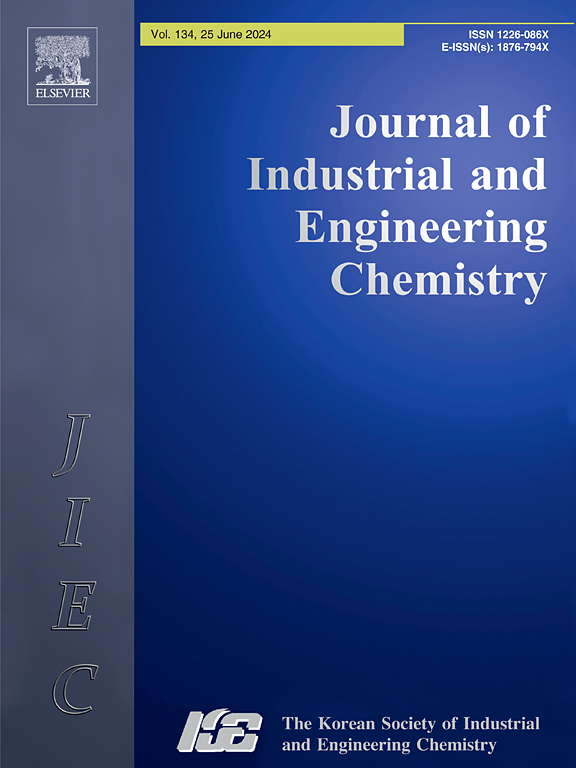Synergistic effect of Au nanoparticles on hydroxyapatite support for photocatalytic degradation of organic pollutants in wastewater
IF 5.9
3区 工程技术
Q1 CHEMISTRY, MULTIDISCIPLINARY
Journal of Industrial and Engineering Chemistry
Pub Date : 2024-10-28
DOI:10.1016/j.jiec.2024.10.060
引用次数: 0
Abstract
The efficient degradation of organic pollutants in wastewater is an important challenge and process a significant threat to ecosystems. The gold nanoparticles (AuNPs) performed well photocatalytic activity but suffered from the obvious agglomeration of nanoparticles and restriction in application. In this study, hydroxyapatite supports was synthesized for loading gold nanoparticles to enhance the dispersed distribution. The synergistic effect of AuNPs and HAP on photocatalysis degradation process were systematic study. The AuNPs were prepared by liquid phase reduction method and then supported on the HAP prepared by chemical precipitation method to form AuNPs/HAP composites photocatalyst. The prepared HAP support showed sufficient AuNPs supporting sites, with a high specific surface area of 17.25 m2/g and a lower porous size of 16.96 nm. The degradation experimental results showed that the AuNPs/HAP had high photocatalytic activity and superior recyclability. When the particle size of AuNPs was lower to 4.82 nm and the mass ratio of AuNPs was 0.5 wt%, the degradation rate of organic pollutants reached 89.9 % under irradiation for 60 min. The excellent characteristics of HAP as support and the fully dispersion of AuNPs with smaller particles size refrained from the particle agglomeration and enhanced the photocatalytic activity of composite photocatalyst.

求助全文
约1分钟内获得全文
求助全文
来源期刊
CiteScore
10.40
自引率
6.60%
发文量
639
审稿时长
29 days
期刊介绍:
Journal of Industrial and Engineering Chemistry is published monthly in English by the Korean Society of Industrial and Engineering Chemistry. JIEC brings together multidisciplinary interests in one journal and is to disseminate information on all aspects of research and development in industrial and engineering chemistry. Contributions in the form of research articles, short communications, notes and reviews are considered for publication. The editors welcome original contributions that have not been and are not to be published elsewhere. Instruction to authors and a manuscript submissions form are printed at the end of each issue. Bulk reprints of individual articles can be ordered. This publication is partially supported by Korea Research Foundation and the Korean Federation of Science and Technology Societies.

 求助内容:
求助内容: 应助结果提醒方式:
应助结果提醒方式:


